Need Traffic? Here's How to Get Visitors to a New Website (Even If You Don't Know Where to Begin)

“How do I drive more traffic to my online store?”
At some point, that thought crosses the mind of every entrepreneur selling online.
Maybe you’ve invested time and effort in setting up your store and tweaked everything for launch, only to open up shop and wonder where all the traffic is. Maybe you’ve seen steady growth over the past six months, but hit a plateau on traffic and sales. Or maybe you’ve been successful with one traffic-driving tactic and you’re curious about what tactics you can try next.
Whether you’re trying to attract your first customer or your 1,000th customer, generating more traffic to your online store is a crucial part of growing your business. If your site is properly optimized for conversions, getting an increase in web traffic could mean more customers and more sales.
What you should know about increasing website traffic
From a marketing perspective, the good news is the process of getting your first customer versus your one hundredth is the same. But for traffic to successfully result in sales and profit, there are some essential prerequisites to ensure that traffic converts and the cost is sustainable. You should be asking yourself:
- Is this a good product? A “good product” means that it’s good enough for your audience and passes their implicit cost-benefits analysis.
- Is there a large target market? A market is a group of people already spending money on something. Are people buying the same type of product?
- Is there an addressable target market? An addressable market is a group of people with visible shared qualities, already spending money on something. Is there a market segment you can focus on?
- Is there a great product story and/or compelling copy? You might have a clear “why” for the product in contrast to competitors, but you need to translate that pitch to compelling web copy. Does your product pitch resonate with them enough to purchase?
- Is there a low-cost way to reach this audience? The goal should be to keep customer acquisition costs low. Are there multiple ways you can reach potential customers?
How to drive traffic to your website
We’ve gathered a list of 20 proven, high-impact tactics for driving more traffic to your online store.
Navigate this guide:
Run paid social media ad campaigns
1. Facebook ads
2. Instagrams ads
3. Pinterest ads
4. Google Ads
Engage in conversation on social media
5. Get friends and family to share
6. Proactively engage on Twitter
7. Post your store to Reddit
8. Drive excitement with contests and giveaways
9. Offer time-sensitive discounts
Reach new audiences with influencer marketing
10. Send free samples to Instagram influencers
11. Reach out to bloggers and press
12. Write a blog post featuring influencers and their advice
Attract customers with content marketing
13. Write blogs to provide information or solve problems
14. Produce podcasts to reach new audiences
15. Use video to educate or entertain
Use SEO to increase your store’s discoverability
16. Write titles that match search intent
17. Write irresistible meta descriptions
18. Leverage internal links
19. Add long-tail keyword variations to your pages
20. Stand out with rich snippets
Which tactic is best for your business?
Some of these sources will generate higher quality traffic for your specific business and some will generate lower quality traffic.
For example, let’s say you’re targeting young professionals interested in buying wacky office supplies. LinkedIn might be a better option over, say, Pinterest.
Traffic acquisition success is found by doubling down on the most relevant traffic you can find. Of course, “the most relevant traffic you can find” is incredibly subjective and different for everyone, so let’s break down each tactic you can use to increase web traffic:
- Tactic type. Whether the idea is a short-term or long-term traffic generator. Short-term tactics usually see results quicker but require more maintenance or reinvestment. Long-term tactics take longer to see results but are more evergreen and require little to no maintenance.
- Effort. How much time, skill, or experience you’ll need to put into the tactic.
- Time to return on investment (ROI). Whether you invest time, effort, or money into a traffic-driving tactic, it will take days, weeks, or months to see that investment increase traffic and sales.
- Cost. The upfront budget you’ll need to launch the tactic.
- Traffic potential. The total amount of traffic that could be sent to your store.
💡 TIP: You should aim to choose one tactic you can do consistently. If you spread yourself thin with trying too many tactics at once, you're not going to see results—and that’s when you get frustrated, and feel like you should give up.
Run paid social media ad campaigns
To increase website traffic for your online store, you need to be able to get your business in front of your ideal customers. With paid social media ads, you can create highly targeted campaigns that serve tailor-made ads to the customers who are most likely to click through and purchase your products.
If you’re thinking about running paid social media ads, here are some platforms you should consider:
1. Facebook ads
Tactic type: Short-term
Effort: Low
Time to ROI: Days
Cost (out of 5 💰): 💰💰💰
Traffic potential (out of 5 👤): 👤👤👤
With 2.6 billion monthly active users as of the first quarter of 2020, Facebook is the largest social media platform in the world. Facebook is filled with opportunities for you to reach new customers and drive them to your online store. Its robust advertising platform lets you target users based on their interests, behavior, location, and more. Facebook also can be a tool that saves you time and money by optimizing your ad delivery and getting your message in front of those most likely to convert.
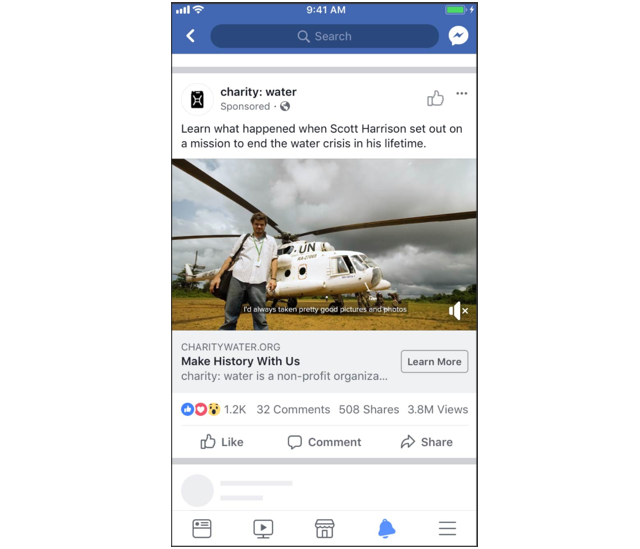
Using Facebook Dynamic Ads you can even serve customers who have previously visited your website automatically generated ads featuring the products they’ve already looked at or added to their carts. These powerful ads can help you bring users back to your website, so you can make the most of the traffic you’re already getting.
- Facebook Ads for Beginners: A Step-By-Step Guide to Running Your First Campaign
- Facebook Dynamic Ads: The Quick and Easy Way to Put Your Facebook Ads on Autopilot
- Facebook Pixel: How to Create Better Facebook Ads for More Conversions
- [Podcast] Grow Your Business with Facebook Marketing the Fresh Heritage Way
2. Instagram ads
Tactic type: Short-term
Effort: Low
Time to ROI: Days
Cost (out of 5 💰): 💰💰
Traffic potential (out of 5 👤): 👤👤👤
Instagram is an incredibly popular platform, with more than one-billion active users worldwide, with 90% of accounts following a business according to Instagram.
Finding hashtags on Instagram or creating videos or images for marketing are just a few of the Instagram tools to grow your following. Creating Instagram ads is most likely to result in growing website traffic and sales, so, if you’ve already built an army of followers on Instagram, you aren’t really using it to its full potential until you’ve tried its advertising platform.
Make sure you’re signed up for an Instagram Business account or convert a personal account to a business one. This will give you even more ways to connect with your audience through Instagram ads. The platform offers the ability to create ads as photos, videos, carousels, collections, and stories, so you can begin creating ads in the content format you find easiest.
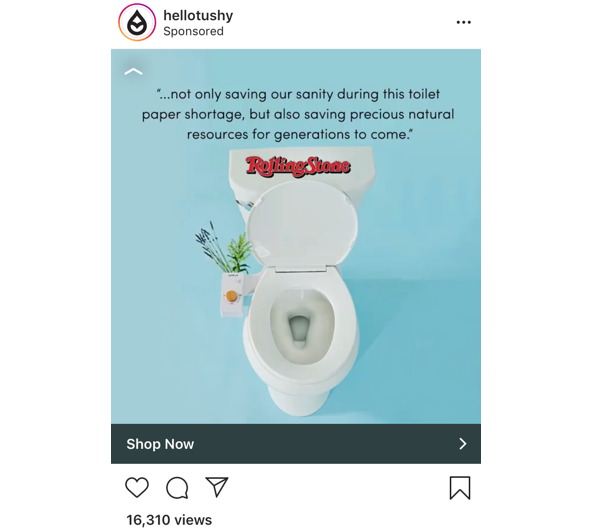
3. Pinterest ads
Tactic type: Short-term
Effort: Low
Time to ROI: Days
Cost (out of 5 💰): 💰💰💰
Traffic potential (out of 5 👤): 👤👤👤
Pinterest is the ideal place to reach your potential customers as they visit the platform to consider future activities and purchases. According to Pinterest, 72% of active users say they use it to find new brands and services, and, in another study, 90% of respondents said Pinterest gives them ideas about which products to purchase.
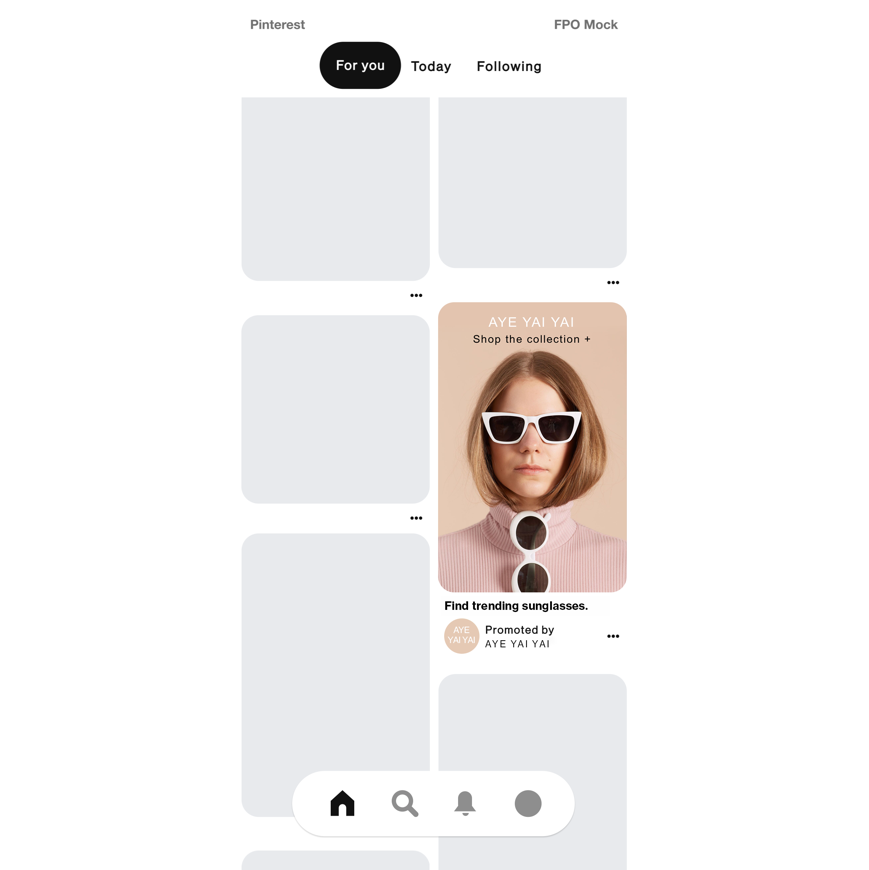
Pinterest is extremely popular among niche groups like home decorating, renovating, landscaping, and DIY crafts and is ideal for businesses hoping to make inroads with these markets.
Pinterest is home to Promoted Pins, a form of paid advertising that pushes your Pins to the top of your customers’ search results, helping you stand out from the crowd. Promoted Pins blend in with the rest of Pinterest’s content, making it a great tool for capturing your customers’ attention and pulling them to your online store.
4. Google Ads
Tactic type: Short-term
Effort: High
Time to ROI: Days
Cost (out of 5 💰): 💰💰💰💰
Traffic potential (out of 5 👤): 👤👤👤👤
Unlike social media advertising platforms, Google Ads offer a unique opportunity to advertise your products and services directly to people actively searching for them. Emarketer reports that 35% of users purchase a product within five days of searching for it.
Google gives you the option to put your ad in front of users on the world’s two largest search engines: Google and YouTube. Although the platform gives you the ability to increase web traffic and sales, on the downside, it’s a complex platform to navigate for beginners, and you can risk spending a lot of money advertising to the wrong audience.
Google offers three ways to put your ad in front of web browsers; search ads, Google Display Network, and YouTube ads. Google ads operate on an auction basis: the amount you bid on your chosen keywords will determine your placement in relation to other bidders, as well as relevancy to the search term.
Engage in conversation on social media
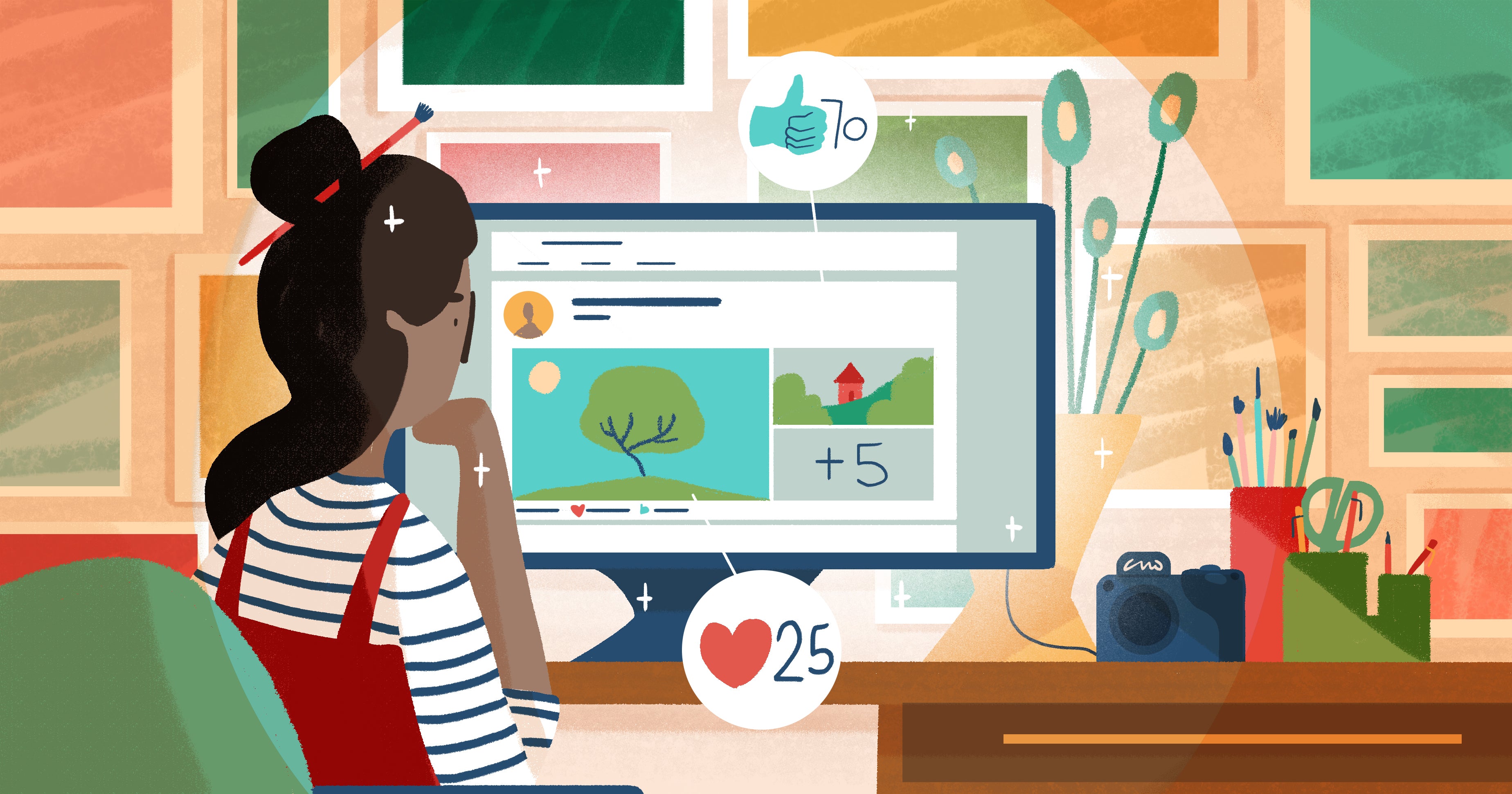
Social media engagement is more than simply sharing a link across Facebook, Twitter, etc., to your online store in the hope it increases website traffic. Social engagement is about encouraging conversations with the right people, responding thoughtfully, and driving excitement and enthusiasm.
5. Get friends and family to share
Tactic type: Short-term
Effort: Medium
Time to ROI: Weeks
Cost (out of 5 💰): 💰
Traffic potential (out of 5 👤): 👤👤
When you launch your business, turning to friends and family to get support is a great tactic to generate initial awareness, traffic, or even your first sale (thanks, Mom!). People don’t launch businesses too frequently, so it’ll probably be quite novel within your circle of friends and family to see you start your own online store. Hopefully they’ll be willing to share news about your brand new business endeavor.
Do you know the site Upworthy? Did you know that its initial momentum was generated by friends and family. It set a goal of getting 1,000 Facebook fans by the end of the day it launched. It worked, and that’s part of what gave it the initial traction to take off.
Reach out in a targeted way to your friends and family. You’ll get away with it without risking irritation. On Facebook, talk about your store in an update.
Are there channels for talking to your extended family? Do they plan reunions on an email list? Send a note and tell them about your new store.
Don’t focus your ask on getting them to buy your products. While you could offer them your products for free or at a big discount—they are your friends and family, after all—instead, ask them to share your store with their networks. These are people with whom you have social equity, and you won’t ask for these kinds of favors very often. You’ll have a higher rate of success than reaching out to strangers, and if enough of them share, that may give you sufficient momentum to keep a regular stream of customers.
6. Proactively engage on Twitter
Tactic type: Long-term
Time to ROI: Weeks
Leverage: Medium
Cost (out of 5 💰): 💰
Traffic potential (out of 5 👤): 👤👤
You don’t need to start selling products before you engage with people on Twitter. There are a lot of ways to get on someone’s radar as a cool new store.
Blackbird Baking Company, a bakery in Toronto that sells fresh bread, built an audience of over 500 engaged, passionate bread lovers on Twitter, ensuring that when it opened the doors of its first bakery, it had a great reception.

Five hundred followers isn’t groundbreaking by any means, but gaining new followers is tough when launching a new business and growing a social media account from the ground up. So, how did Blackbird get a few hundred followers pre-launch?
First, the bakery followed a disciplined social media marketing strategy. It generated some follow-backs by following select people on Twitter it determined may be interested in a new bakery. These include restaurateurs and self-declared bread enthusiasts in Toronto.
You can find people with similar or niche interest in your field too. One tool to find relevant users is Followerwonk. Log in through Twitter and you can search relevant keywords in bios and profiles.
Second, Blackbird has been uploading photos of its breads being baked and delivered to stores around Toronto to Instagram and Facebook. The pictures are mouthwatering and shareable.
Third, Blackbird Baking Company engages proactively with people who tweet about the local community. Topics include life in Toronto, great food, and, of course, bread.
So when the bakery finally opened, there were lots of interested people waiting to buy bread.
How you can engage with a Twitter audience:
- Use Twitter Advanced Search to look for keywords related to your business in people’s tweets or bios, or try a tool like Followerwonk.
- Once you’ve found an audience, look for chances to help people or add value to their conversations in a way that lacks a sales pitch.
7. Post your store to Reddit
Tactic type: Short-term
Effort: Low
Time to ROI: Weeks
Cost (out of 5 💰): 💰
Traffic potential (out of 5 👤):👤👤
Reddit, a collection of forums and subforums, is where people share news and content and leave comments. In addition to its main page, which aggregates the most popular content on the platform, it also has thousands of niches called subreddits. You can find a subreddit on nearly any subject, for example, /r/bicycling, /r/scifi, or /r/corgi.
Reddit poses an interesting opportunity to grow brand awareness and generate website traffic to your store. It’s a place where passionate folks congregate around their favorite topics to debate the minute and share advice, best practices, and personal life stories.
First, there are a few threads you should be paying attention to that may help your business. The /r/entrepreneur subreddit, with about 739,000 subscribers, has lots of interesting tips and discussions on starting a business. You might also be interested in the related /r/smallbusiness thread as another source of general business advice.
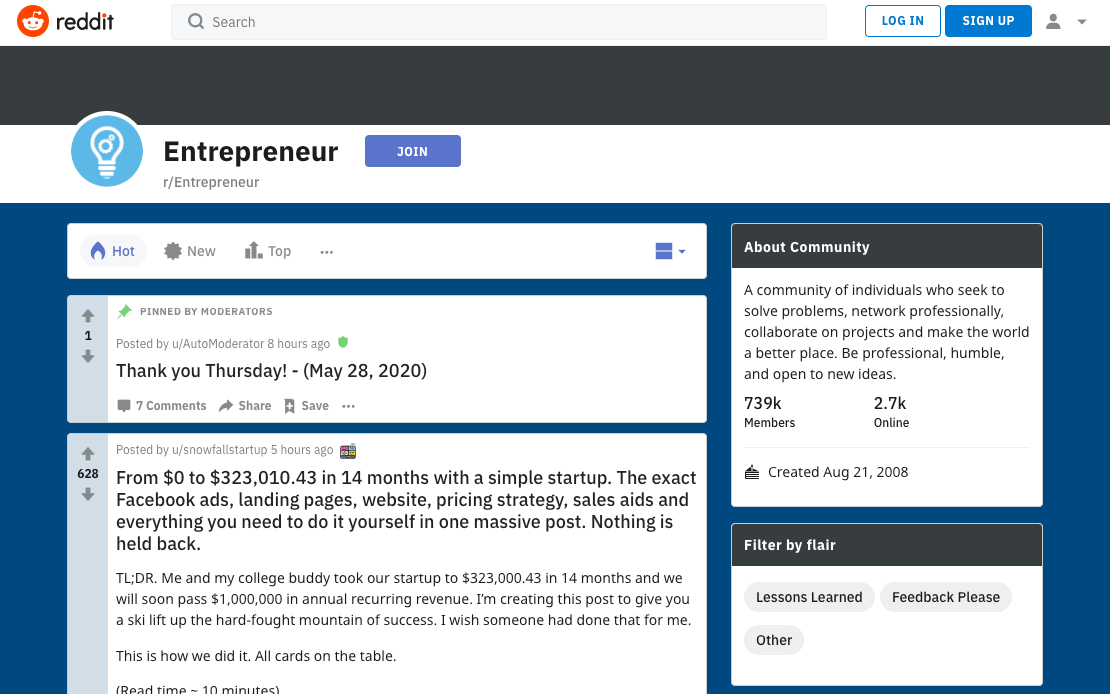
Let’s use the example of starting a business selling hair products.
Navigate to a few subreddits such as /r/femalehairadvice, as there’s a lot of discussion on all aspects of haircare for women. There are also subreddits like /r/haircarescience, /r/curlyhair, or simply /r/hair.
To promote your business and hopefully drive traffic to your site, create a new post. Make the post brief, displaying only the essence of what your new store is about. Here are the components of a great post:
- Create a catchy headline. Keep it topical to the subreddit. For example, if we posted in the curly hair subreddit, we might try the headline “Who says that short hair can’t be fancy?”
- Add value and be concise. The text within the main body of the post will be snappy, catchy, and not very salesy.
- Add a photo. It’s not essential, but adding images can help convey your messages and as they appear on the subreddit page and might grab further readers.
- Add a link to your most relevant product. This is essential. Leave a link so people can find out more about your product or business.
Pay attention also to the Reddiquette guide and check out whether you’re following Reddit guidelines rules of your subreddit. They’re always found in the sidebar to the right of the subreddit. Some subreddits don’t allow promotional material, so posting what’s basically an ad for your store is not allowed. If you post about your site to a place that doesn’t want it, either you’ll find that no one’s upvoting your link or, in extreme cases, you may even get banned from the subreddit.
8. Drive excitement with contests and giveaways
Tactic type: Short-term
Effort: High
Time to ROI: Days
Cost (out of 5 💰): 💰💰💰
Traffic potential (out of 5 👤): 👤👤👤👤
Contests and giveaways are a great way to get more followers on Instagram, increase social media engagement, and drive traffic to your website. When you run a contest or giveaway, 94% of the time users share the promotion immediately after they register. And of the total participants, 62% share the promotion with a friend and suggest they take part too.
With viral contests, giveaways, and sweepstakes you can quickly drive more traffic to your store by offering exciting prizes in exchange for your customers’ participation. Prizes and rewards are powerful incentives for getting both current and new customers to actually visit your store.
Using tools like Gleam, Woobox, or contest and giveaway apps on the Shopify App Store you can embed giveaways into landing pages or blog posts on your store. These contests can even use social sharing as a method of entry, giving your sweepstakes a higher chance of going viral and spreading around social platforms. Once participants are on your store, you can use different techniques to guide them to your products, like offering discounts or coupons on first purchases.
9. Offer time-sensitive discounts
Tactic type: Short-term
Effort: High
Time to ROI: Days
Cost (out of 5 💰): 💰💰💰
Traffic potential (out of 5 👤): 👤👤👤👤
Offering time-sensitive discounts can be an extremely effective way to get people to take action, generating traffic and increasing sales. Putting an expiration on your discount leverages scarcity, which is a powerful psychological sales trigger.
In the example below, bags and accessories brand Rareform offers a discount that expires after one day. Rareform is a larger brand and can afford a 50% discount and flash sales on its products. If you’ve launched your store recently, consider adding a minimum purchase limit. This can be a smart way to still offer your fans a nice incentive but also make sure you don't give away the farm.
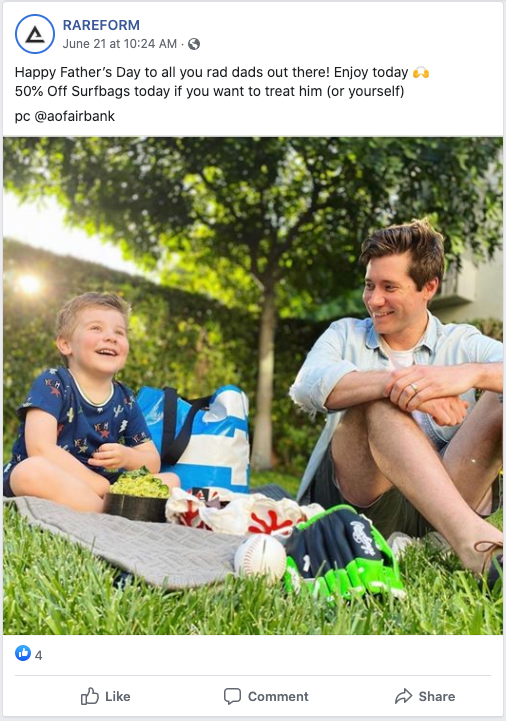
Product discounts aren’t the only offer you can provide customers. If you don’t normally offer free shipping, then occasionally doing so can be a compelling incentive to drive traffic from social media or email marketing campaigns onto your store.
Reach new audiences with influencer marketing
Influencer marketing is the process of building relationships with influencers to get your online store in front of new audiences. According to BrightLocal, 88% of people trust online reviews written by other consumers as much as they trust recommendations from personal contacts.
With influencer marketing, you can harness the creativity and reach of relevant influencers in your industry while leveraging the trust they’ve already formed with their audiences, generating referral traffic to your store.
10. Send free samples to Instagram influencers
Tactic type: Short-term
Effort: High
Time to ROI: Weeks
Cost (out of 5 💰): 💰💰
Traffic potential (out of 5 👤): 👤👤👤👤
Instagram is one of the most effective marketing channels for ecommerce businesses. According to Yotpo, at least 30% of Instagram users have purchased products they discovered on the platform. It’s also a great way to increase awareness of your brand and potentially drive traffic to your store—especially if you know how to target influencers.
Bloggers and social media celebrities like Estee Lalonde are highly trusted by their followers, so getting them to feature your products is an effective, organic tactic for increasing your traffic.

There are more reasons to work with an Instagram influencer other than accessing their audience. You can tap into their knowledge of the platform, see what works, and learn to create the best content for that platform. Also, you can work with them as consumers of your brand and get their feedback and perspective, which can help improve your products.
💡 TIP: If you’re yet to find an influencer to work with, find one through an influencer marketing platform.
Here are some questions to ask yourself when looking for an Instagram influencer to work with:
- Are they a good brand fit? Ask yourself: “Does the influencer we’re going to work with seem like someone we would want to be a customer, and would they actually use or wear our stuff?”
- Do they have good engagement rates? It’s not always about the number of followers—engagement rate is more important. Ideally, an influencer’s engagement rate is anywhere from 2–3%, with multiple comments on each of their posts.
11. Reach out to bloggers and press
Tactic type: Short-term
Effort: High
Time to ROI: Weeks
Cost (out of 5 💰): 💰
Traffic potential (out of 5 👤): 👤👤👤👤
It’s hard to grow a business and market it alone. When it comes to selling online, the more connections you have the better—especially if they’re connections with an engaged audience of their own. Having connections who will talk up your product is essential to driving traffic to your site and increasing sales. This is where blogger outreach comes in.
Blogger outreach is about more than making friends online. It’s a process to help you achieve measurable success in your business. Even if you don’t have a lot of contacts online you can still reach out to people. The key to successful blogger outreach is to offer value and tell bloggers exactly what’s in it for them. Even if they are a good natured individual, asking for help rarely will work, as people are busy and have a million things of their own to do.
Here are some blogger outreach ideas to help you generate traffic:
- Guest post on other blogs. While growing your own audience, guest posting gives you a way to get in front of someone else’s. Link back to your site where relevant, even if it’s only in the author bio.
- Do an expert roundup. Seek out experts on a topic and ask them to contribute an idea, such as a tip, recipe, or story, to your blog post. Then, publish a list of all the responses you get back. Let them know when you publish your insight and they’re likely to share it with their audience.
- Solicit product reviews. Contact bloggers with relevant, engaged audiences and offer to send them your product for free in exchange for an honest review. If you have a great product, they’ll love it and tell everyone.
- Find affiliates to promote your business. Incentivize other people to drive traffic to your business by using an affiliate program and offering a commission on every sale .
- Get included in gift guides. The right gift guides can increase sales and traffic to your website. However, inclusion in these guides does not happen randomly and requires some effort, as there is strong competition to get your product listed.
- Ask Instagram influencers to promote your product. The same techniques for reaching out to bloggers still apply when contacting instagram influencers. Getting the right mention or stylish photo can drive traffic or sales to your store.
- Get press coverage. If you have a great story or an interesting product that people will want to write about, put it out there! Get in touch with bloggers and journalists who cover businesses like yours and tell them what you’re up to.
You don’t have to target the biggest and most successful people. You have a better chance of getting featured by influencers with a smaller audience because they’re not constantly swarmed with requests. Keep in mind that the loyalty of the audience matters almost as much as its size.
12. Write a blog post featuring influencers and their advice
Tactic type: Short-term
Effort: Medium
Time to ROI: Days
Cost (out of 5 💰): 💰
Traffic potential (out of 5 👤): 👤👤👤👤
This tactic is an expansion of blogger outreach that deserves its own section, as it has worked well for a long time and continues to do so.
The core of the tactic is: write a blog post featuring an influencer and/or their advice, and send it to them in an email or via Twitter in the hope they share it with their audience.
For example, here are two ideas to get started:
- Ask influencers their advice on a product. Imagine you’re a cosmetics brand and you’re writing a blog post on what to look for in buying your next foundation. You might want to reach out to influencers that write or record videos of their reviews and ask them what they think is the most important thing to look for when buying a new foundation. You could do this with only one influencer or as many as you see fit.
- Create a master list of trustworthy voices in your niche. Potential buyers are always looking for authorities in the space they can trust to get consumer reviews. If your industry has influencers, try writing a blog post that lists the top five, 10, or 20 trustworthy influencers in your niche. By doing this you’ll help potential buyers and start building a good relationship with influencers.
After you’ve produced your blog post, reach back out to the influencer with a link and ask them if they can share it with their audience.
Instead of waiting for an influencer to feature you, you can feature them first. If you’re looking for influencers to connect and build a relationship in your industry with, this might jump-start the process.
Attract customers with content marketing
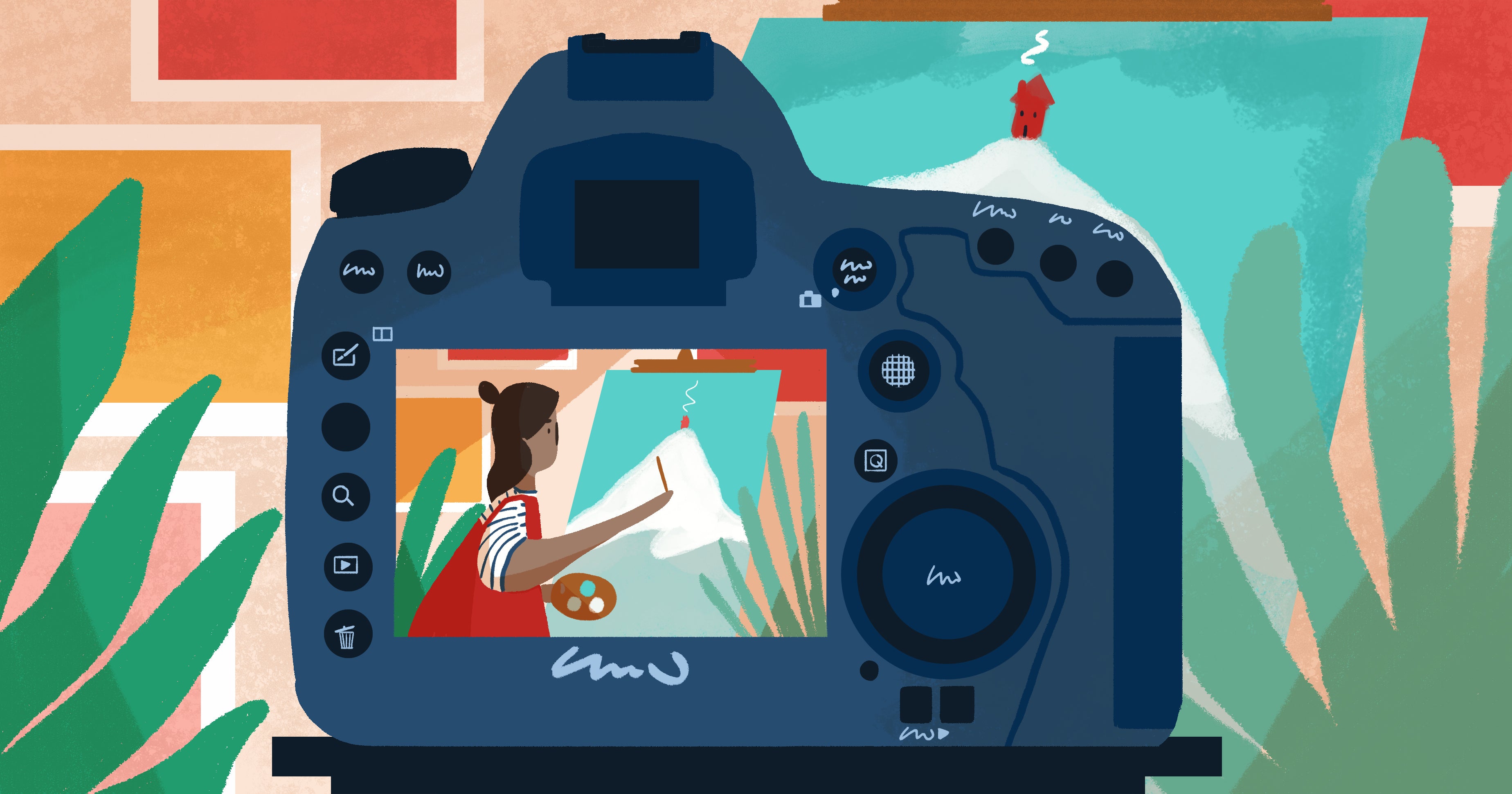
Content marketing is about creating interesting, informative, and engaging content to organically attract customers to your online store. From videos and podcasts to guides and ebooks, there are endless opportunities for your business to branch out into the world of content and generate traffic.
Original content helps position your business as an industry thought leader and build your brand. Your business’ content strategy can include anything your customers might find relevant or interesting—don’t limit yourself to content that includes or focuses on your products. Instead, consider any and all topics and resources related to your business that your customers would find useful.
Content marketing also gives your store the chance to conquer search results beyond product and brand keywords. Using free tools like Google Keyword Planner and Keyword.io, you can identify new opportunities for your business to rank in search results and get in front of larger audiences.
13. Write blogs to provide information or solve problems
Tactic type: Long-term
Effort: Medium
Time to ROI: Months
Cost (out of 5 💰): 💰
Traffic potential (out of 5 👤): 👤👤👤👤👤
According to WordPress, the world’s largest blogging platform, each month 409 million people view more than 20 billion blog pages. In the same period of time, WordPress users produce about 70 million new posts, and 77 million new comments.
While there is ample opportunity to reach an audience, if you want to attract relevant buyers and generate traffic back to your store through blogging, you’ll need to be purposeful about your targeting. Solving problems through content while also producing “search engine findable” is the best method for a blog, but it isn’t easy. It’s literally the job description of a good content marketer. Content marketing on a blog involves some customer journey mapping, persona building, keyword research, and content gap analysis.
Successful content marketing on a blog starts with two things:
- Figuring out who your ideal audience is. Put yourself in your potential customer’s shoes: what problems do they have that they turn to your store to solve? What interests them outside of your products? What do they do for fun with friends? What are they passionate about? Craft blog content based on the answers to these questions.
- Creating content where your ideal audience would want to hangout. Sites that win big have pages with information that people are looking for. To get in front of the right audience, make a list of topics and phrases to target. Ask yourself: If I were looking for this product/service/article, how would I search? What words would I use? What phrases? Getting in the mind of your visitor-to-be is the key to generating quality traffic.
Don’t go into blogging unprepared. Know your ideal audience, have a strategic plan for gaining mindshare with that audience, and eventually create a new place for them to hang out online.
14. Produce podcasts to reach new audiences
Tactic type: Long-term
Effort: Medium
Time to ROI: Months
Cost (out of 5 💰): 💰
Traffic potential (out of 5 👤): 👤👤👤👤👤
According to Edison Research, the number of Americans listening to podcasts every week increased 175% over the last five years, with roughly 90 million listening to a podcast each month.
Much like blogging, podcasting gives you the potential to excel in a specific niche, targeting a specific audience.
The problem is that podcasting isn’t necessarily optimized for traffic acquisition. Podcasts are enjoyed at the gym, on the bus, or during a lunchtime walk. Unlike a blog post or social media post, there’s no call to action to click while you’re listening. There is a heavier lift on the listener to remember key points and take additional steps after listening to a prompt or suggestion.
You have to find other ways to drive traffic and make it as easy as possible for listeners to find information mentioned in the episode, says Shuang Esther Shan, who manages the Shopify Masters podcast. “We stick to three core principles. First, for in app podcast descriptions we provide a concise and accurate summary of the episode with a link to our blog post that accompanies the episode. Second, on our blog, we’ll publish a key summary for easy access and reading as well as the transcripts for our hearing-impaired audience. Finally, if an episode covers a lot of apps, tools, or any other useful resources, we’ll provide a list of relevant resources with each item linked accordingly.”
📚 Learn more: How to Start a Successful Podcast (For Under $100)
15. Use video to educate or entertain
Tactic type: Long-term
Effort: High
Time to ROI: Months
Cost (out of 5 💰): 💰💰
Traffic potential (out of 5 👤): 👤👤👤👤👤
While there are various options for hosting videos, YouTube is the most popular and the best channel for generating traffic. It’s also the second-largest search engine in the world.
The potential audience and numbers you can reach are impressive. According to YouTube’s stats, it has over two billion users (almost one-third of all people on the internet), and on mobile alone reaches more 18–34 year olds than any TV network in the US, with more than 70% of YouTube views. The demographic on the average viewer is wide open. The average YouTube user is not a young, single male.
So, how do you narrow down that massive audience and get the right eyes on your YouTube channel and then back to your store? Here are some of the different types of content your business could be using:
- Educational content. Teach new skills to build trust with your audience and, if possible, use your product as the centerpiece for solving their problem.
- Storytelling. Inspiring videos that fit into your business’ identity are perfect for communicating your brand’s image and ideals to a wider audience.
- Entertainment. Fun videos that cater to your audience’s interests is one of the best ways to capture viewers’ attention and focus it onto your products.
Use SEO to increase your store’s discoverability
Can your customers actually find your store online?
When customers search for your products, you want your store to be one of the top results that appears for their search, especially considering a study by marketer Brian Dean that reports 75% of clicks go to the top three results on a search engine results page. That prized position is a key ingredient for generating sustained, qualified website traffic for your online store.
Search engine optimization, or SEO, is the process of fine-tuning your website to increase its chances of ranking highly in search results for relevant keywords.
SEO is a fine science and only works when you put time and effort into learning the rules that govern search engines like Google and Bing and apply those rules to the structure and content of your site.
16. Write titles that match search intent
Tactic type: Long-term
Effort: Low
Time to ROI: Days
Cost (out of 5 💰): 💰
Traffic potential (out of 5 👤):👤👤👤
The meta title is the line search engines show on their results page for search queries.

Both meta titles and meta descriptions are attributes that determine how your page appears on a search engine results page. They’re immensely important to getting clicks to pages. Click throughs from search traffic are the lifeblood of organic traffic. They’re one of the essential metrics Google uses to prioritize the order of results.
Google explains, “Titles are critical to giving users a quick insight into the content of a result and why it’s relevant to their query. It’s often the primary piece of information used to decide which result to click on, so it’s important to use high-quality titles on your web pages.”
Ultimately, it’s the meta title that’s going to help you stand out. This what we recommend you aim for when writing meta titles:
- Create unique titles for each page.
- Keep page titles to less than 55 characters.
- Keep consistent with use of title or sentence case across all your pages.
- Include your target keyword.
- Ensure you match the search intent of the query.
17. Write irresistible meta descriptions
Tactic type: Long-term
Effort: Low
Time to ROI: Days
Cost (out of 5 💰): 💰
Traffic potential (out of 5 👤):👤👤
A meta description acts as a summary of a page’s content. Search engines often display it on the results page.

While writing a great page title can grab attention on a search engine results page, clicks to pages can be won by an alluring and interesting meta description. Google explains, “A meta description tag should generally inform and interest users with a short, relevant summary of what a particular page is about. They are like a pitch that convinces the user that the page is exactly what they're looking for.”
Alternatively, if your copy is boring and doesn’t offer any compelling reason to click, you’ll get much less traffic, and this could affect your organic search ranking. It’s also worth noting that meta descriptions can be any length but they’re often truncated to fit the device the search is performed on.
What to aim for:
- Summarize the content on the page.
- Write a meta description with a max of 145 characters.
- Write a unique description for each page.
- Use sentence case and keep it consistent across your site.
- Write description copy that’s intriguing and click worthy.
- Include the keyword in your description, if possible
📚 Learn more: How to Write Meta Descriptions that Drive Traffic and Conversions
18. Add internal links to and from important pages
Tactic type: Long-term
Effort: High
Time to ROI: Weeks
Cost (out of 5 💰): 💰
Traffic potential (out of 5 👤):👤👤👤
Getting external links is an important and well-known technique for boosting SEO, but internal links also play an important role in helping pages rank in search engines. This is because of the Google metric called PageRank, a formula that can measure the importance and value of a page by the quantity and quality of pages that link to it.
Linking from pages with a high PageRank on your domain can pass authority and help the target page to rank better. Alternatively, linking from your lower priority pages to high priority pages on your website can pass that PageRank back to your priority pages.
Here’s what you can do:
- Optimize your site structure for SEO.
- Find and submit your sitemap to Google Search Console.
- Add breadcrumbs to your product categories to instantly create internal links.
- Make a list of high-value target pages you’d like to have rank better.
- Identify the pages on your website that currently have the most authority and page rank. (You can do this with a free tool like Moz Toolbar for Chrome.)
- Add a link from your authority page(s) to your target page(s).
- Incorporate the link naturally on the authority page using anchor text related to the keyword you’d like the target page to rank for.
💡TIP: You can find ideal anchor text to link by searching in Google with the following search operator: site:yourdomain.com “keyword or phrase related to page”
A site’s homepage usually will be the most authoritative page on a domain, so it’s an obvious choice for an authority page to link from. This is just the tip of the iceberg when it comes to what you can do with internal linking. For more information on internal linking, see these articles from Moz and Ahrefs.
19. Add long-tail keyword variations to your pages
Tactic type: Long-term
Effort: Medium
Time to ROI: Weeks
Cost (out of 5 💰): 💰
Traffic potential (out of 5 👤):👤👤👤👤👤
Building a keyword strategy for your ecommerce website is essential for consistently generating organic traffic from search engines. It’s easy to focus on short, high-volume terms, because they’re easier to identify and research, but you might be missing out on page views if you’re not looking at long-tail keywords.
Ahrefs performed a study across 1.9 billion keywords and found that 92% of them get 10 searches per month or fewer. On analysis of their data, while 60% of searches go to keywords with 1,001 or more search volume, these are short-tail keywords that make up only 0.16% of total keywords. This means the remaining 40% of keywords are long-tail keywords that own 99.84% of queries with 1,000 or fewer searches per month.
This is great news because long-tail keywords are easier to rank for and usually get clicks from search engines at a much higher rate than shorter, more generic terms.
As an example of how you can maximize your exposure to long-tail variations and increase your traffic, let’s pretend we sell the Logitech C310 webcam and want to optimize our page to rank for as many searches as possible. We could use a tool like Google Keyword Tool and make note of all the long-tail variations or, if we really wanted to go in depth, a free tool like keyword.io could unearth many long-tail queries. We’d also want to look at the bottom of the search results where Google lists related searches. The related searches for “Logitech C310” look like this:
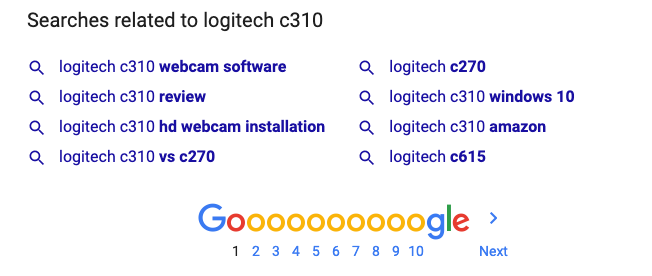
Because our Logitech C310 page is optimized for the term “Logitech C310,” we don’t need to insert each long-tail search phrase into the page verbatim. Instead, we want to work the unique variations at the end of “Logitech C310” into our copy to allow the possibility of ranking for it.
Revisiting the related searches from above, we’d want to pick and choose relevant words and add them to our page. For instance, we might include the words “review” and “windows 10.” We can also compare the differences between the C270 and C615 models by using the phrases “vs C270” and “C615.” With all of these newly included modifiers incorporated into the copy, our page has the potential to rank for a wider range of queries.
Not all of the modifiers we uncovered will be applicable. Branded keywords such as “amazon” won’t be useful, and we would likely have a number of modifiers already incorporated. However, more often than not, by looking for long-tail variations we’ll uncover a handful of gems to help increase potential ranking opportunities and ultimately boost our traffic.
20. Stand out with rich snippets
Tactic type: Long-term
Effort: High
Time to ROI: Weeks
Cost (out of 5 💰): 💰💰
Traffic potential (out of 5 👤):👤👤👤👤
Rich snippets are search listings that include information about a product’s price, availability, and review count. They’re useful for learning more about a particular product and/or site at a glance from the search results page without having to visit it.
Rich snippets can amplify how much traffic you drive from search engines. A study by Search Engine Land on rich snippets found they can increase the number of people that click on your page by up to 30%. That’s a huge boost for something that can usually be implemented relatively painlessly once you get used to making these customizations to your site. Compare that to increasing your marketing or ad-spending budget by 30% and you’ll see why it’s so powerful.
If your page is appearing on a results page and it includes a price range, star rating, image, or anything that makes your listing stand out from listings that have only the standard meta titles, description, and URLs, your page will certainly get more traffic.
Shopify already includes structured data and rich snippets functionality for your product pages:
You can use the Google Structured Data Testing Tool to make sure there are no display problems. Rich snippets can take some time to appear in search listings, so don’t worry if you don’t see them right away.
If the thought of editing your theme is intimidating, consider hiring an expert or trying some apps that can help build structured data onto your pages:
Get more traffic, get more customers
With these tactics in your marketing toolkit, you should now be able to generate more website traffic for your online store. Increasing traffic starts with picking a tactic and relevant channel and getting started, rather than trying them all at once. Remember a good digital marketing strategy is about layering short-term and long-term tactics so they work in tandem. Once you’ve feel like you’ve mastered one, why not come back here and pick your next traffic-driving tactic?
More traffic to your online store means more opportunities to turn those casual shoppers into paying customers. Once you’ve increased your traffic, consider trying out Conversion Rate Optimization as a next step.
Have any questions about how to increase website traffic for your online store? Share them in the comments below.
Illustration by Rachel Tunstall
